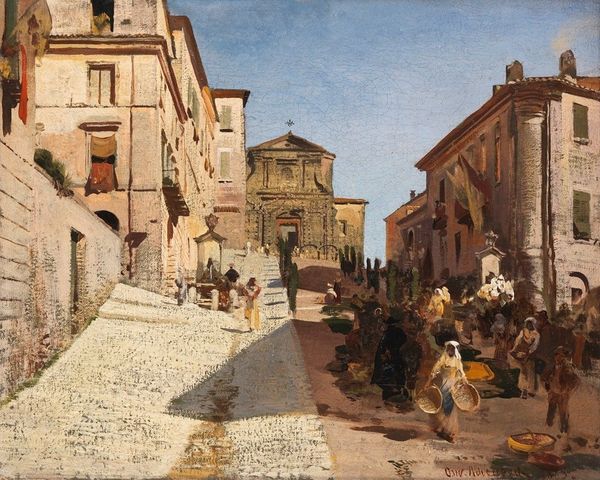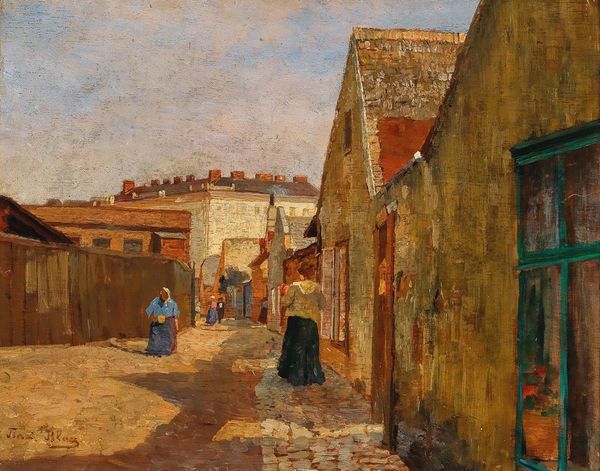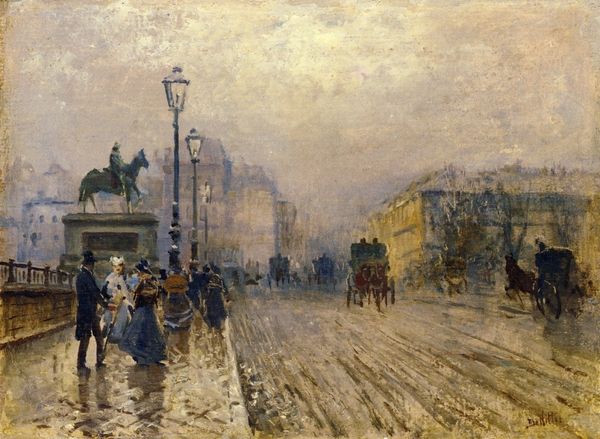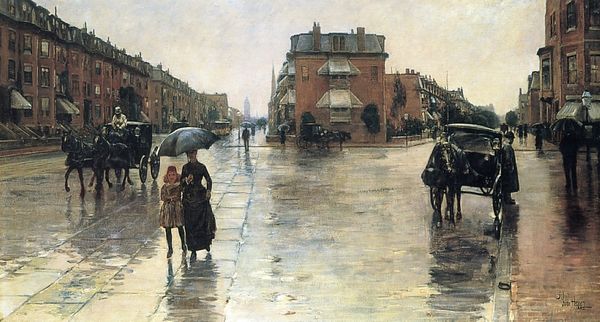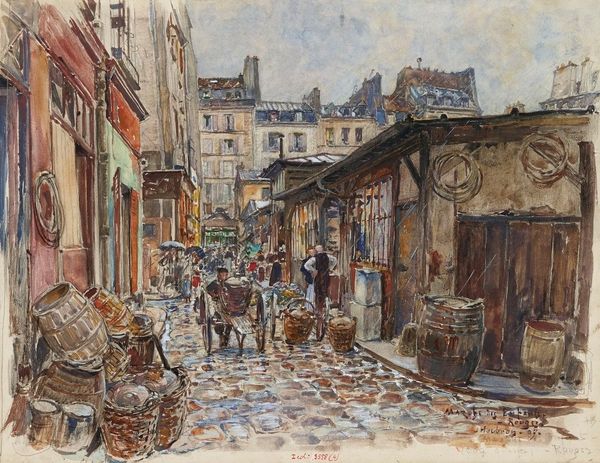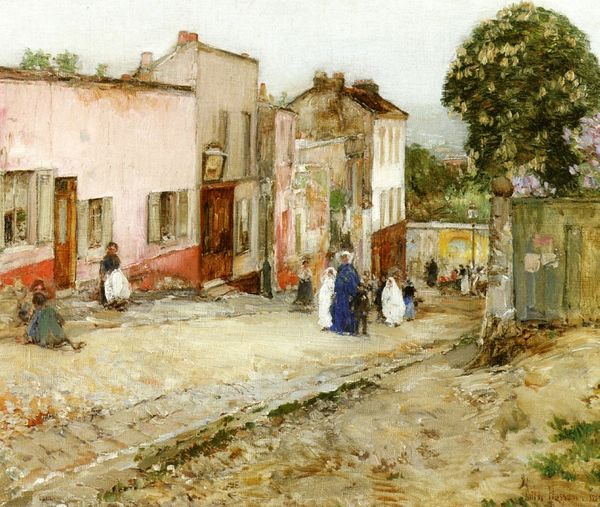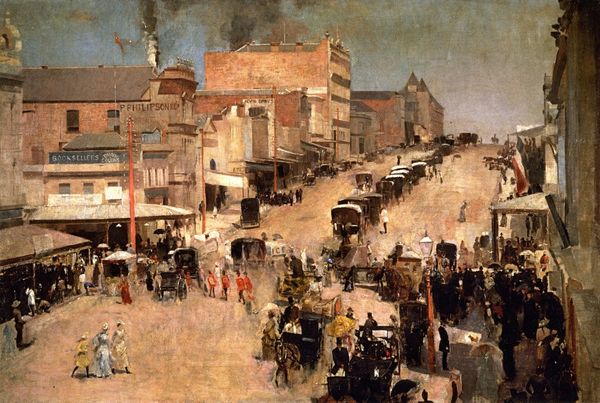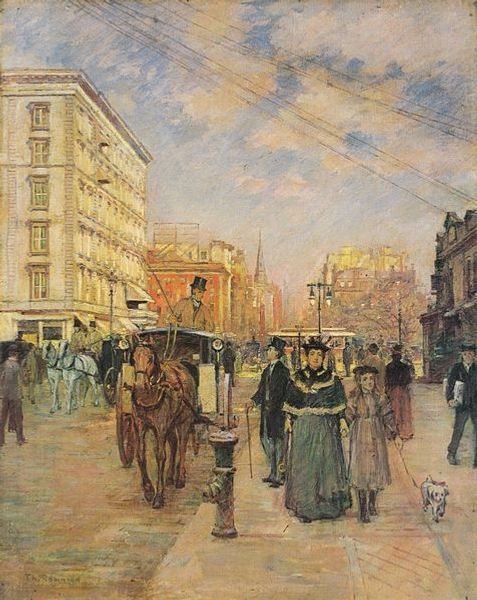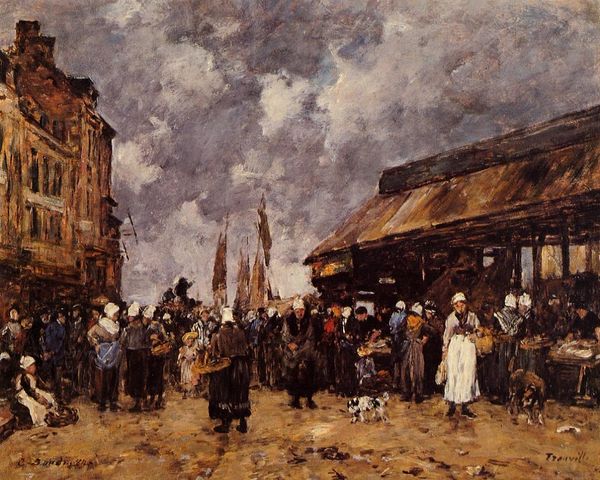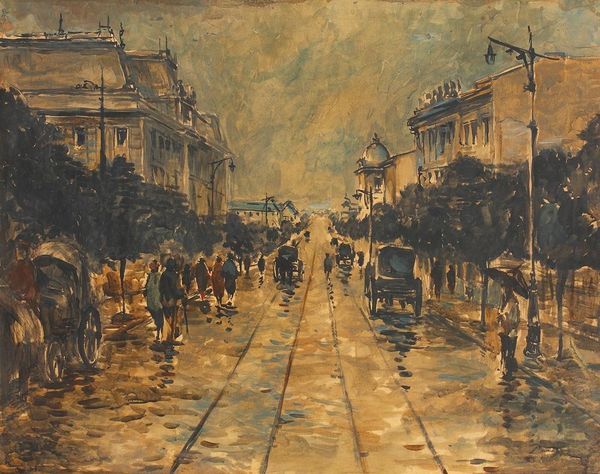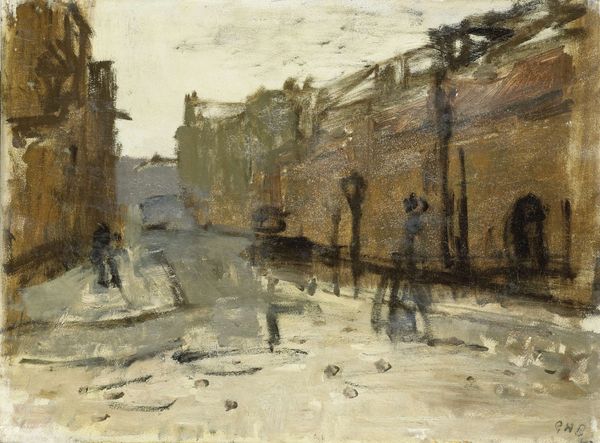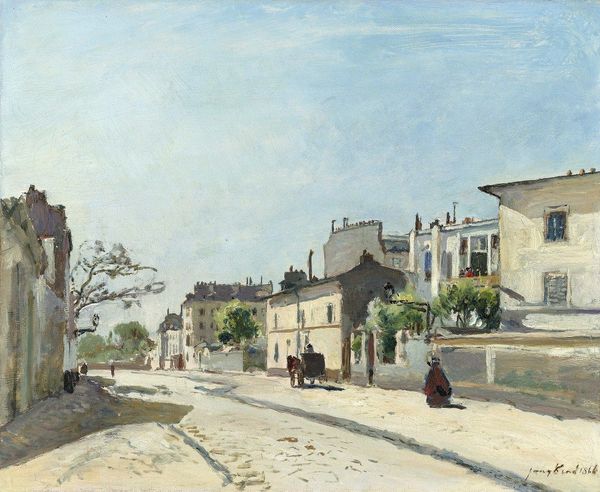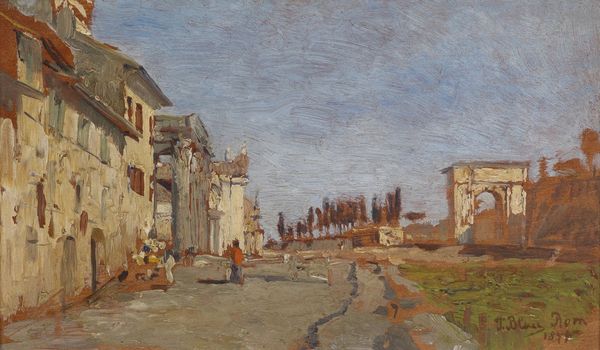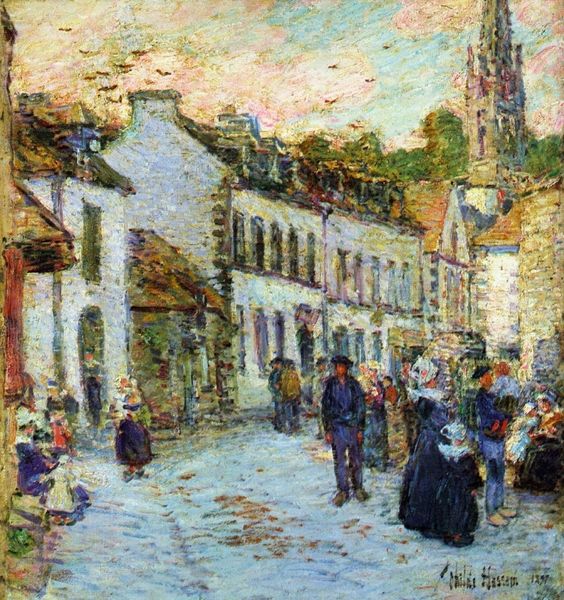
painting, plein-air, oil-paint
#
painting
#
impressionism
#
plein-air
#
oil-paint
#
landscape
#
oil painting
#
cityscape
#
genre-painting
#
realism
Copyright: Public domain
Editor: Here we have Telemaco Signorini’s “Sobborgo Di Porta Adriana a Ravenna,” an oil painting from 1875. It depicts a street scene, people going about their daily lives… There’s almost a gritty realism to it, despite the Impressionistic brushstrokes. What do you see in this piece? Curator: I see a reflection of the changing social landscape of Italy during the late 19th century. Signorini, aligning himself with the Macchiaioli movement, wasn't just painting a pretty picture. He was engaging with the public role of art, choosing to depict everyday life, specifically the working class in this suburb of Ravenna. Editor: So, the choice of subject matter itself is a statement? Curator: Absolutely. Think about what was deemed worthy of artistic representation before this. Grand historical narratives, portraits of the wealthy, religious scenes. Signorini, like Courbet before him, is democratizing art, bringing it to the streets, both literally and figuratively. And what does that mean politically? It means celebrating the lives and labor of those often ignored or marginalized. Editor: I hadn’t thought about it in those terms. The light is also very striking; how does that fit into the broader context? Curator: Notice how the light washes over everything, almost unifying the disparate figures and architectural elements. This ‘en plein air’ approach, painting outdoors, allowed Signorini to capture the immediacy of the moment, reflecting the fleeting nature of modern life and moving painting out of the confines of the Academies and making it a vehicle for recording contemporary, rather than historical events. The politics of imagery, you see, are intertwined with technique. Editor: I see! So, this painting is much more than just a street scene; it's a social commentary disguised as an Impressionistic landscape. I’ve definitely gained a richer understanding. Curator: Precisely! By examining the painting's historical context, and Signorini’s intentions, we unveil the painting’s subtle but powerful narrative. It invites us to reconsider art’s purpose in public life.
Comments
No comments
Be the first to comment and join the conversation on the ultimate creative platform.
